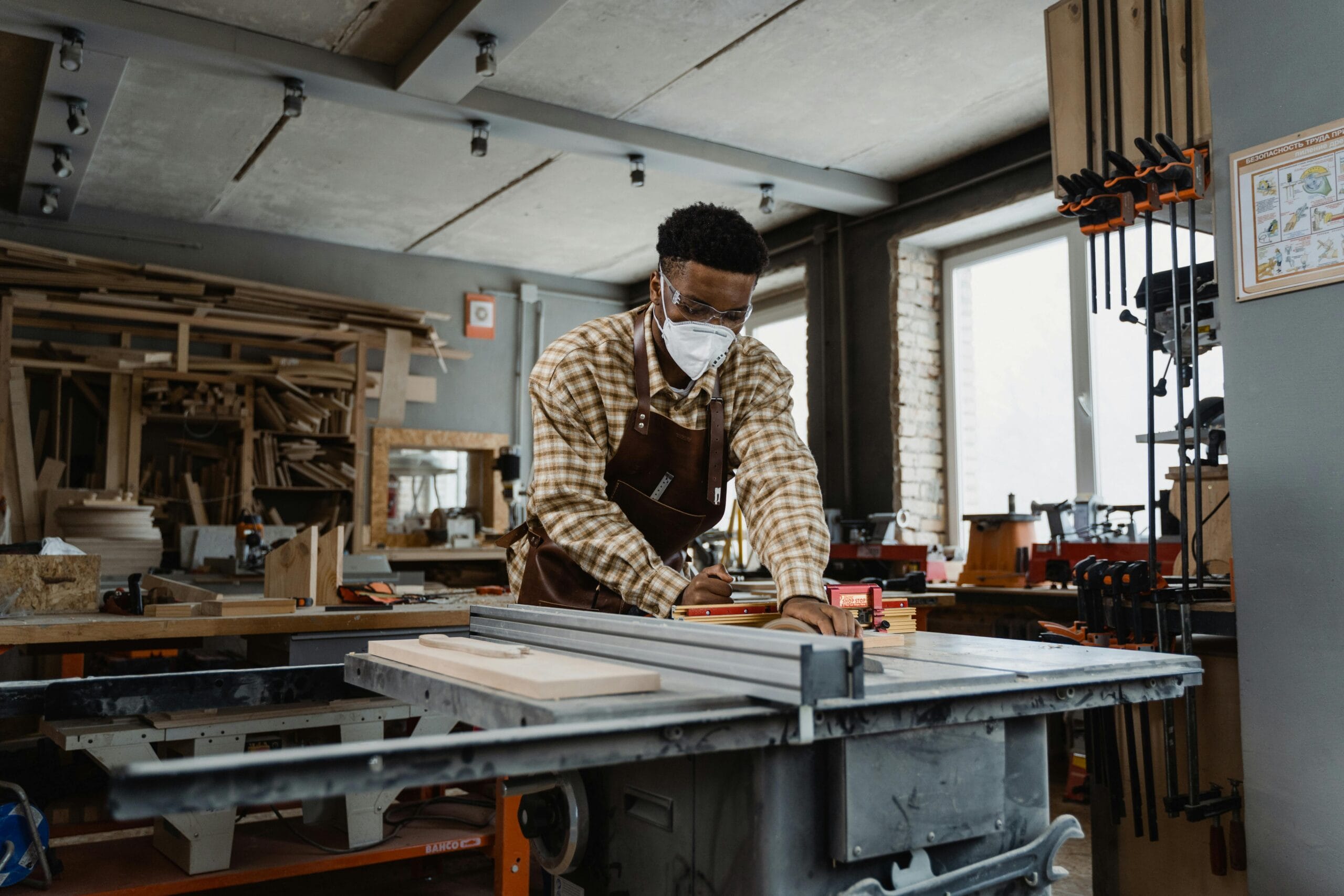
When it comes to carpentry, safety should always be the top priority. Whether you’re working on a small DIY project or running a large-scale operation, the risks involved are real. That’s why wearing the proper Personal Protective Equipment (PPE) is crucial. By taking a few simple precautions, you can avoid serious injuries and work with peace of mind. But what specific PPE do you need before getting started? Let’s break it down.
Wearing the right PPE in carpentry prevents injuries like cuts, eye damage, hearing loss, and respiratory issues. Essential gear includes gloves, eye protection, hearing protection, and a dust mask. These items help you stay safe and focused on your work without compromising your well-being.
Now that we understand the importance of PPE, let’s take a closer look at the specific gear needed for carpentry.
What specific PPE is necessary for carpentry work?
Carpentry involves a variety of tasks that can expose you to different hazards. To stay safe, it’s essential to wear the right PPE.
Essential PPE for carpentry includes safety glasses, gloves, hearing protection, dust masks, and durable work clothing. These items help protect you from common carpentry dangers like wood splinters, loud noises, and airborne dust.
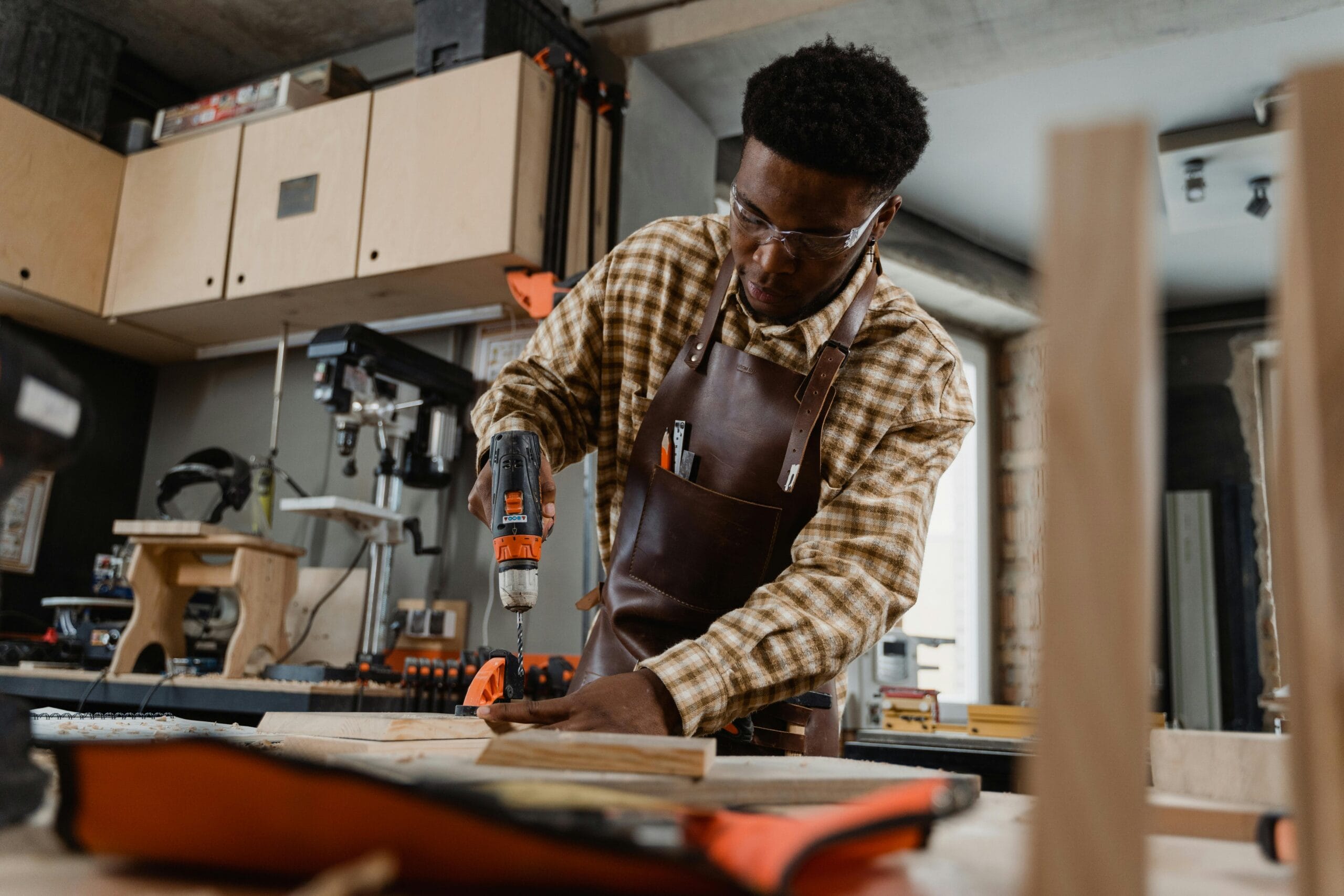
1. Eye Protection
One of the most important pieces of PPE when working in carpentry is eye protection. Carpentry projects, especially those that involve cutting or sanding wood, generate debris that can fly into your eyes. Wood splinters, dust, and small fragments can cause serious eye injuries, ranging from mild irritation to permanent vision loss. To prevent this, it’s critical to wear safety glasses or goggles that meet industry standards. These protective lenses can shield your eyes from both large and fine particles.
While regular glasses can provide some protection, they don’t offer the same level of safety as dedicated goggles. Goggles have a snug fit and provide a seal that prevents dust and debris from entering the eyes from the sides. In addition, anti-fog coatings on goggles help maintain clear visibility, reducing the risk of accidents caused by impaired sight.
2. Wood Dust and Splinters
Wood dust is an unavoidable byproduct of carpentry work. Whether you’re sanding, cutting, or drilling, wood dust can become airborne, posing respiratory risks. Prolonged exposure can lead to respiratory conditions like asthma or even more serious lung diseases. Wearing a dust mask or respirator is crucial in these situations.
A simple dust mask may help reduce the amount of dust you inhale, but for better protection, a respirator that filters out fine particles is ideal. These masks create a barrier between your lungs and harmful particles, ensuring cleaner air while you work. Additionally, wearing gloves designed to prevent splinters helps protect your hands from cuts and abrasions, which are common when handling raw wood.
3. Hearing Protection
Another often-overlooked safety precaution in carpentry is hearing protection. Power tools like saws, drills, and sanders can reach sound levels that are damaging to your hearing. Prolonged exposure to loud noises can result in permanent hearing loss. That’s why earplugs or earmuffs are necessary to reduce the impact of these sounds.
Earplugs are discreet and comfortable, offering a reasonable level of protection. However, earmuffs offer superior sound blocking, especially when working with high-powered machinery. For maximum comfort, choose hearing protection that fits securely and doesn’t interfere with your other PPE, such as safety goggles.
4. Gloves
Choosing the right gloves is essential for preventing hand injuries in carpentry. Whether you’re handling raw wood, operating power tools, or securing materials, gloves protect your hands from cuts, abrasions, and punctures. But not all gloves are created equal. For carpentry, you’ll want gloves that are durable yet flexible enough to allow for precision work.
Leather gloves are a great option as they provide both toughness and flexibility. They protect against splinters and cuts while allowing you to maintain dexterity. However, it’s important to ensure that your gloves fit properly. Gloves that are too tight can reduce comfort, while those that are too loose might affect your grip on tools, increasing the risk of accidents.
5. Protective Clothing
Carpentry work often involves dealing with heavy equipment, wood debris, and unpredictable circumstances. Wearing long-sleeve shirts and long pants can help protect your skin from cuts, abrasions, and wood splinters. Additionally, durable work boots with steel toes can protect your feet from falling objects or accidental tool drops.
For extra protection, consider wearing a work apron or vest with multiple pockets for easy access to tools. Not only does it keep your tools close at hand, but it also offers an extra layer of protection against sharp edges or heated surfaces.
| PPE Item | Purpose |
|---|---|
| Safety Glasses/Goggles | Protects eyes from debris, dust, and splinters. |
| Dust Mask/Respirator | Shields lungs from inhaling harmful wood dust particles. |
| Hearing Protection | Reduces the risk of hearing loss from loud tools. |
| Gloves | Protects hands from cuts, abrasions, and splinters. |
| Work Clothing | Shields skin from sharp objects and debris. |
Conclusion
PPE is not just a precaution; it’s a necessity when working with carpentry tools. By wearing the right gear, you protect yourself from common hazards like dust, splinters, loud noises, and injuries from power tools. The right PPE lets you focus on your craft while ensuring you stay safe and healthy for years to come.
Zion Zhang
Recent Posts
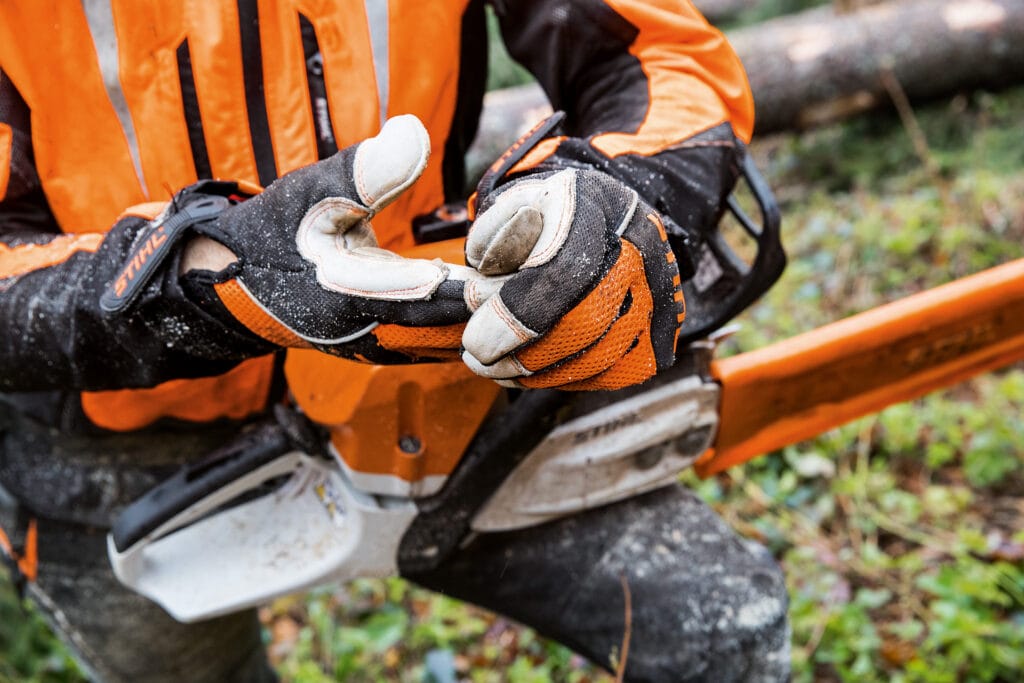 How a Kazakhstani Trader Won a Government Contract for Mining Workwear2025年10月30日In Kazakhstan’s booming mining industry, one small trader […]
How a Kazakhstani Trader Won a Government Contract for Mining Workwear2025年10月30日In Kazakhstan’s booming mining industry, one small trader […]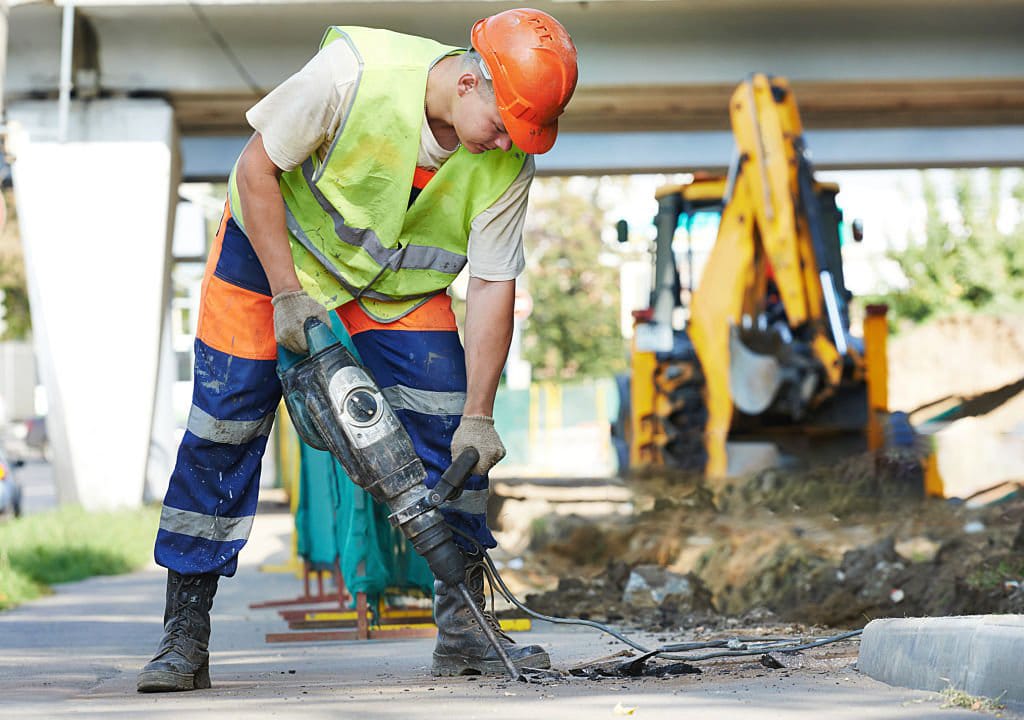 A South African Retailer’s Journey from Importing Shoes to Supplying Full PPE Kits2025年10月30日In South Africa’s rapidly growing industrial supply market, […]
A South African Retailer’s Journey from Importing Shoes to Supplying Full PPE Kits2025年10月30日In South Africa’s rapidly growing industrial supply market, […] How a Jordanian Contractor Built His Own Workwear Brand for Construction Projects2025年10月30日Introduction In the competitive world of construction, […]
How a Jordanian Contractor Built His Own Workwear Brand for Construction Projects2025年10月30日Introduction In the competitive world of construction, […]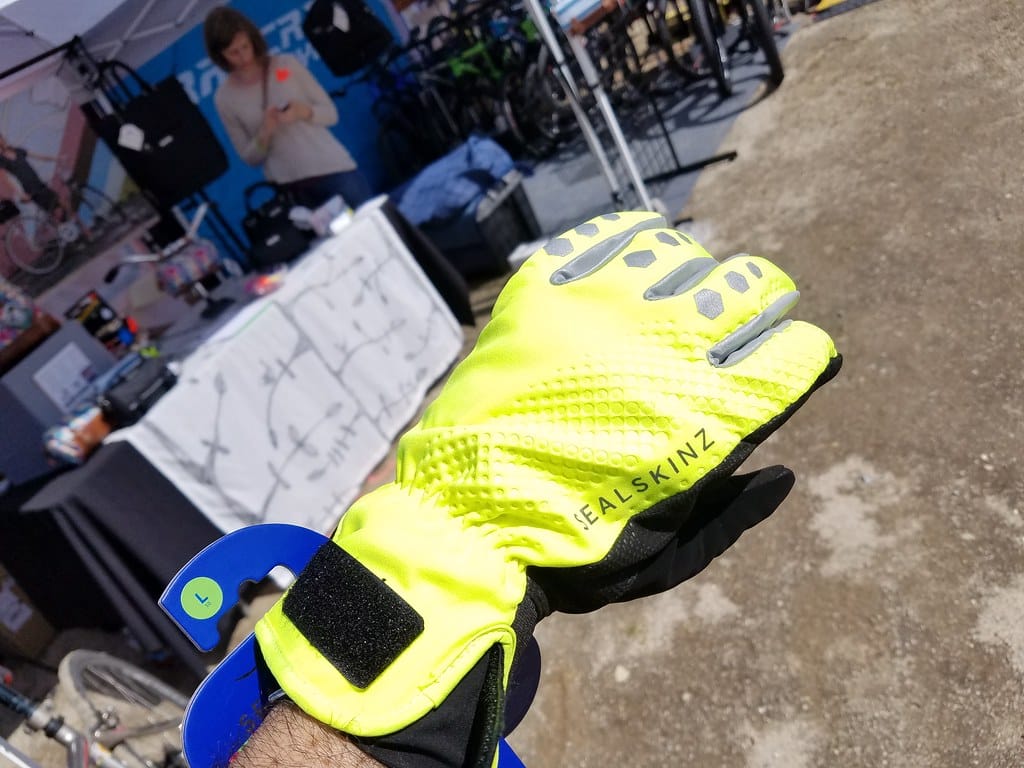 The Nigerian Agent Who Lost $50,000 on Fake Certificates — Then Came Back Stronger2025年10月20日Introduction In the global trade of PPE and industrial […]
The Nigerian Agent Who Lost $50,000 on Fake Certificates — Then Came Back Stronger2025年10月20日Introduction In the global trade of PPE and industrial […] How a Brazilian Trader Used $5,000 to Break into the PPE Market2025年10月20日Introduction In a world where industrial safety and […]
How a Brazilian Trader Used $5,000 to Break into the PPE Market2025年10月20日Introduction In a world where industrial safety and […] From First Order to Market Leader: A Ghana Distributor’s 3-Year Journey2025年10月20日In the fast-growing African PPE and workwear market, small […]
From First Order to Market Leader: A Ghana Distributor’s 3-Year Journey2025年10月20日In the fast-growing African PPE and workwear market, small […]
CONTACT US
- Feel free to contact us any time. We will get back to you as soon as we can!
- +86-17330061805
